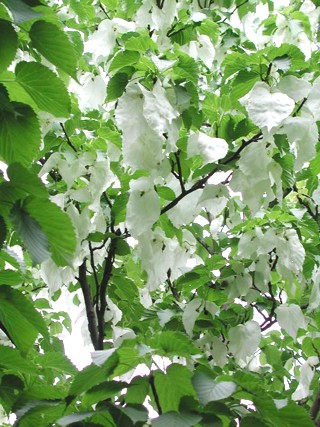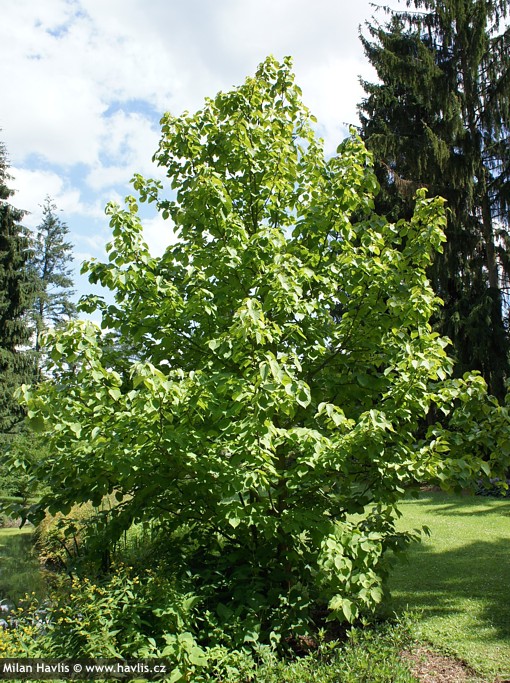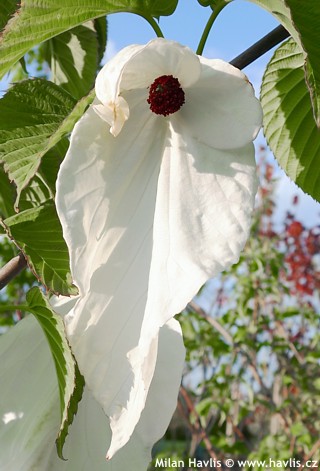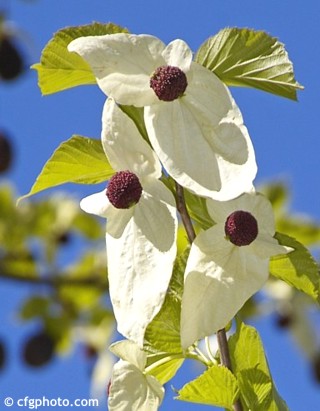Davidia involucrata var. vilmoriniana dove tree
Vilmoriniana is a special variation of dove tree. This elegant and rather exotic looking tree is still rare in cultivation in Europe. It was believed to have been extinct after the glacial era, however, in late 19th century some specimens were found in Sichuan, China. Dove tree was brought to Britain in 1903 and cultivated as a rarity in some gardens of the tempered climate.
Its main attraction are the large, white bracts surrounded around a small, green flower head in May. Owing to the bracts shape this plant is also called handkerchief tree. Compared to other medium-sized or big trees this one starts blooming relatively young = when about 10 years old. The leaves are deciduous, mid green, oval to heart-shaped, and finely serrated. As opposed to the species the undersides are pale green to grey and lacking the felt-like tomentum.
Usual height is between 6 and 8m. Under good conditions and in areas with plenty of space for the root system (parks and large gardens) it can grow to 12-15m. Pruning will not keep it smaller, only hideous.
Young tree has a pyramidal-shaped crown, growing more rounded and broad with age. It needs well-drained but constantly moist soil, rich in humus and preferably deep. Do not grow it in windy areas. It is fully hardy to -24°C (USDA zone 6) and can withstand temporary swings to -27°C in protected locations.
Last update 28-01-2008








































